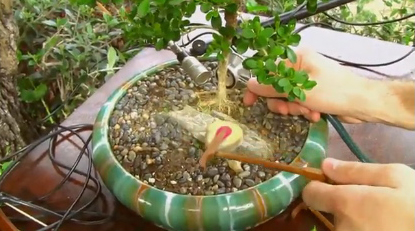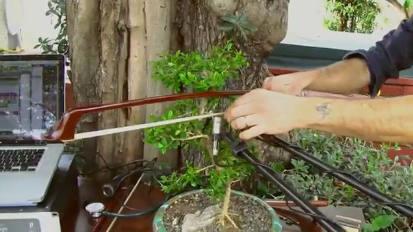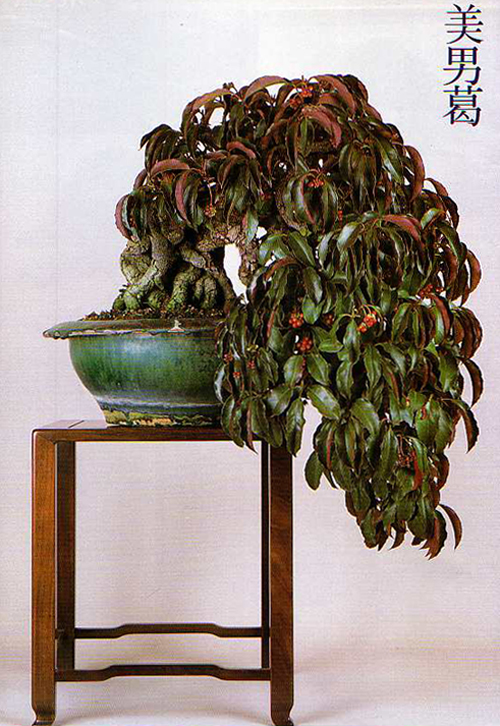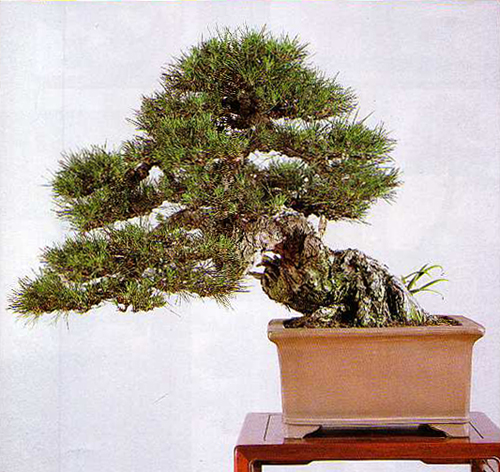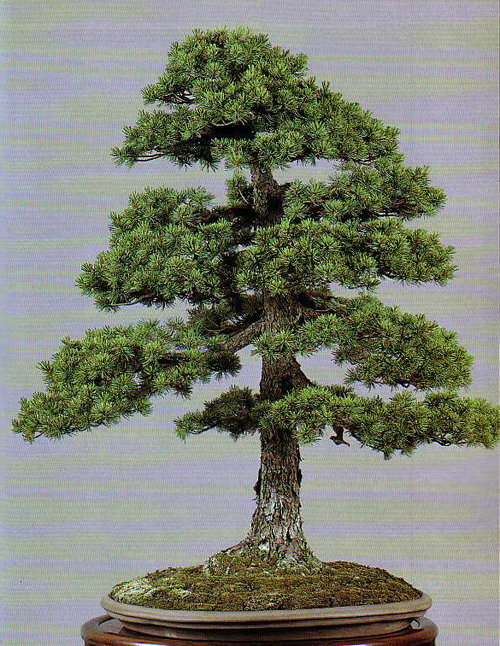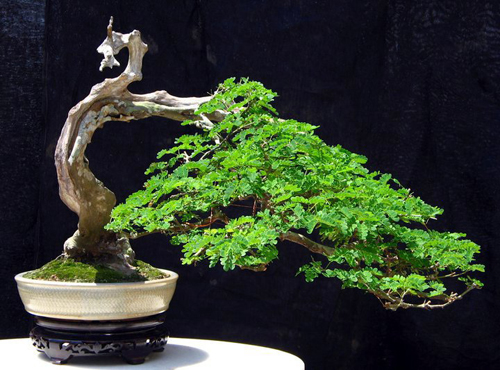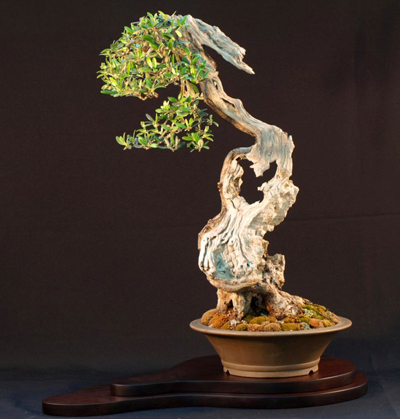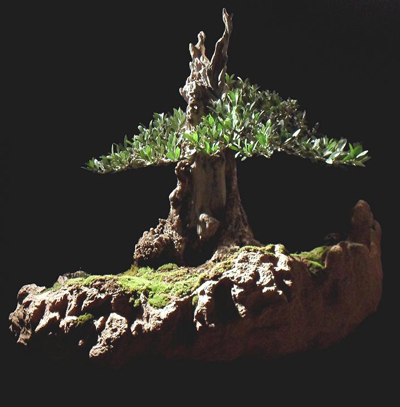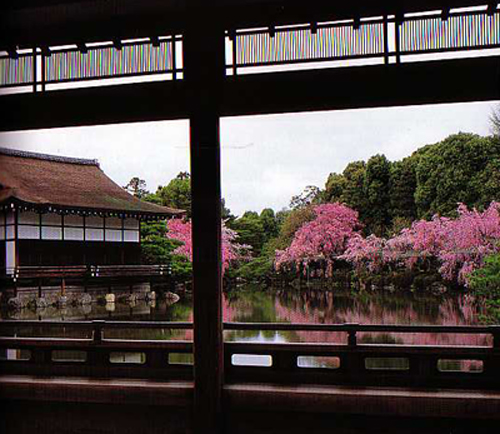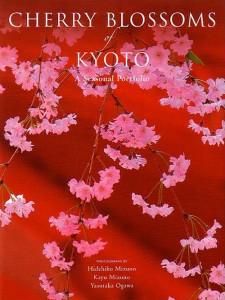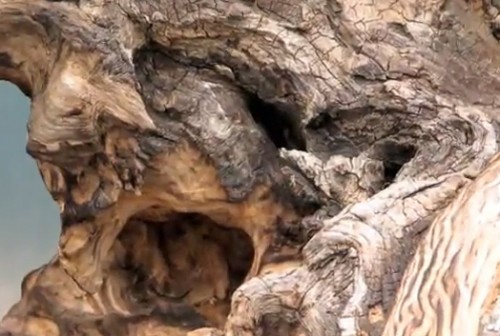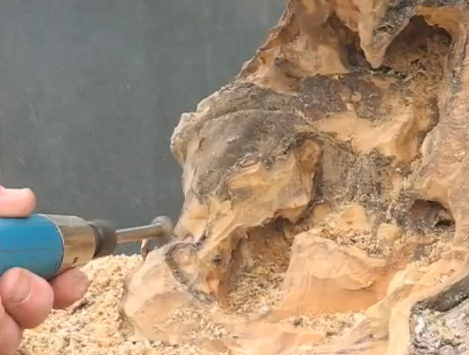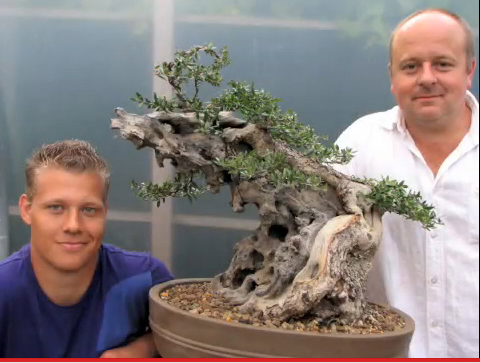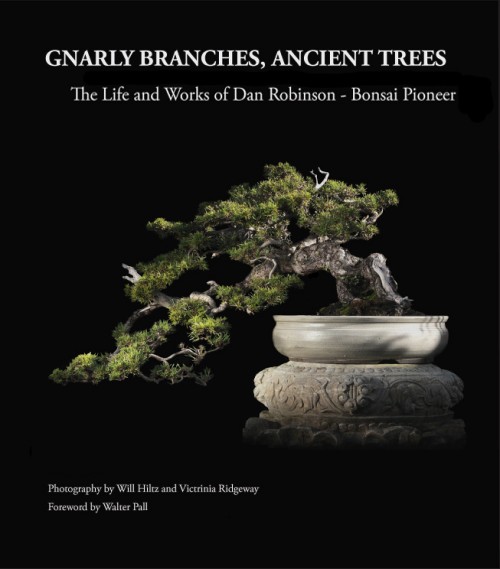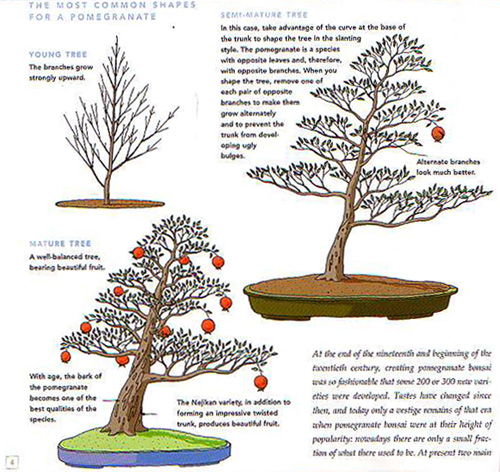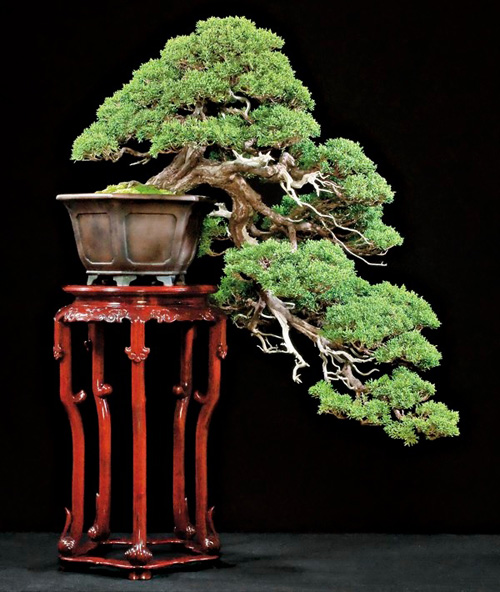Source: Bonsai Tonight
Decandling a red pine forest
Sixteen years ago I planted a group of red pine seeds. I made seedling cuttings, watered, and fertilized the trees, but never created a plan for their future. As a result, fate determined their present form. The trees were healthy but ungainly – perfect candidates for a forest planting.
Red pines are a very vigorous variety. Cutting them back hard seems only to trigger more vigorous growth. Timing, in these cases, becomes an important ally for managing new growth. By May, new shoots had covered the trees, but it was still too early for decandling.
Strong growth in May, but too early to decandle
By the mid-June, the trees had filled in considerably. This was a good time to decandle.
Red pine forest before decandling – front
Before decandling – back
It was hard, at first, to get past the new growth and find where to cut. Once I had cleared an opening, the work went quickly.
Getting started
I left stubs at the base of the most vigorous shoots. For less vigorous shoots, I removed shoot and stub. I left the weakest areas of the tree alone so they can regain vigor and help balance the foliage.
Vigorous new shoot
Vigorous shoot removed – note stub
Leaving stubs is a technique for slowing the most vigorous shoots. I can’t explain why it works, but experience has proved it to be a good technique for balancing growth.
I also removed a lot of old needles as I worked. I removed more from strong areas, fewer in weak areas. As with the decandling, the goal is to balance growth.
Decandled branch
One tree down, five to go
After much clipping and plucking, the trees looked pretty bare. I’ve removed a similar amount of foliage from these trees before and expect them to fill in again by late fall. Careful watering and fertilizing will help – a warm summer will help more.
After decandling – front
After decandling – back
Strong area – candles and old needles removed
Weak area – spring growth retained
Mixed area – strong growth removed and weak growth retained
Although I’m confident that the tree will come out well this fall, I know not to expect too much. Decandling is a funny practice. Sometimes the trees come out a bit too strong, other years, too weak. I’ll provide updates along the way and we’ll see what this year brings.
Read more!

